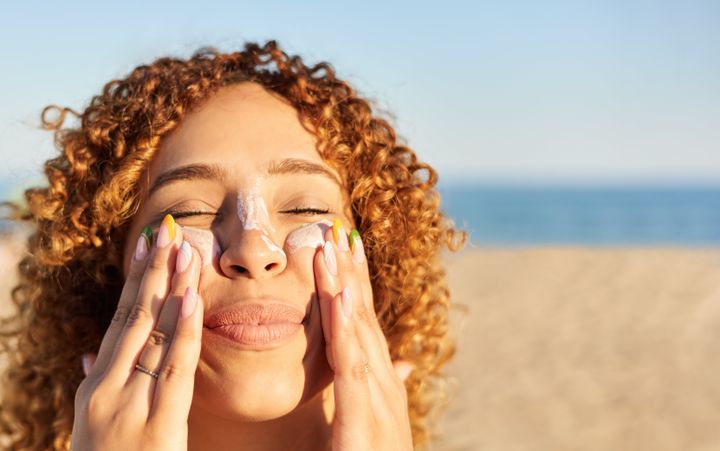
It’s finally spring in the UK and although it’s still quite grey outside, eventually the days will get brighter – which means we should start to be extra careful with our skin when we’re out and about.
Most of us know that we should be applying SPF on our faces every day (yes even in the winter) but are we doing it the right way?
According to experts, we’re making some common mistakes when it comes to using sunscreen, which could be damaging to our skin during the hot summer months.
Sarah Hastings, a vitamin expert at vitamin and supplement brand Chewwies, shares the three most common misconceptions around SPF, and how best to avoid mistakes when using and applying sunscreen.
Mistake 1: Using low-protection SPF to help get vitamin D
“One of the most common mistakes I see is people choosing a low SPF, such as SPF 15 or 20, because of the belief that their body absorbs more vitamin D this way,” Hastings says.
But, this is a complete myth. The truth is that using a low SPF can do more harm than good, according to Hastings.
“I recommend using SPF 50 for the best protection against harmful UV rays. Regardless of temperature and weather, using SPF 50 or above will always be one of the best ways to protect your skin, and it won’t stop you from absorbing the vitamin D you need,” she adds.
Mistake 2: Only applying sunscreen once or twice throughout the day
Unfortunately applying your sunscreen once or twice throughout the day will not do much for your skin. “I frequently hear of people applying moisturiser or makeup products that contain SPF in the morning and then thinking they are protected for the day, this is false,” Hastings explains.
She continues: “Sunscreen should be applied at least 30 minutes before going outside and ideally reapplied every 2 hours, and this doesn’t include reapplying after swimming or exercising.”
She advises taking portable sunscreen with you on any days out during the summer so you’re always ready to reapply, especially during peak sun hours between 10am and 4pm.
Mistake 3: Not checking the expiration date on last year’s sunscreen
If you don’t remember when you bought your sunscreen, you might have to throw it away as sunscreen only tends to have a shelf life of three years.
“Many high street brands will have a shorter one than this, so it’s extremely important to check the expiration dates on your sunscreen every year,” Hastings says.
“Sunscreen that has expired only acts as a moisturiser and offers minimal protection from the sun, leaving you at a real risk of burning and causing damage to your skin,” she adds.